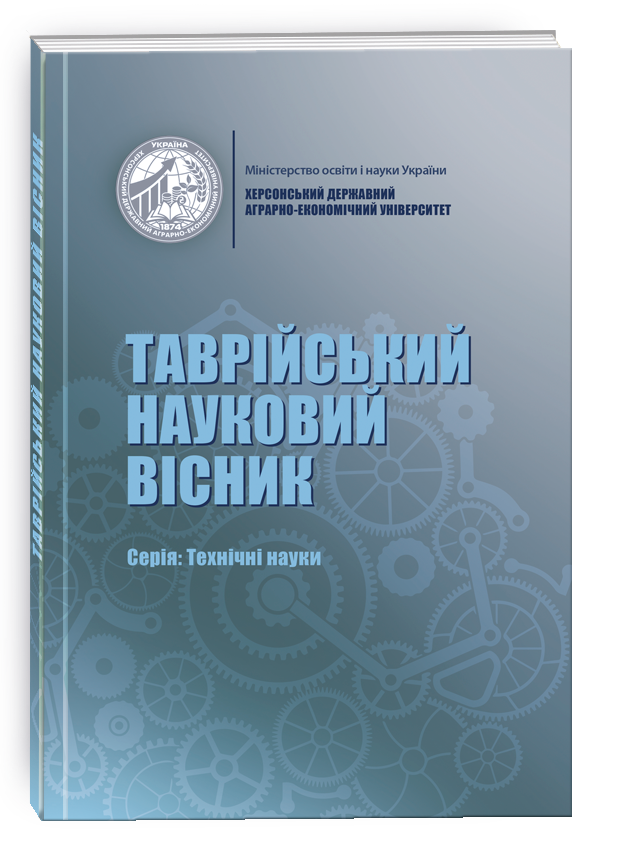STUDY OF THE EFFECT OF HIGH TEMPERATURE ON THE QUALITY INDICATORS OF ENRICHED SUGAR AND ITS PRODUCTS
DOI:
https://doi.org/10.32782/tnv-tech.2024.4.28Keywords:
enriched sugar, wild raw materials, osmotic dehydration, berries, temperature, pH, Maillard reaction.Abstract
Granular sugar and osmated syrup enriched with derivatives of wild plants were used for this study. In order to investigate the influence and the possibility of using sugar not as an independent product, but also as a raw material in products, a scheme was developed and caramel was produced on the basis of osmatized syrup. For the production of caramel, the maximum temperature of 120 0C was used. Analyzing the data from the sources, this is the optimal temperature for preserving the properties of wild berry derivatives. The effect of high temperatures on the organoleptic parameters of enriched sugar was also investigated by means of caramel production, while tasting and evaluation of quality parameters were carried out. Sea buckthorn caramel received the highest rating, because the color appeared with a more saturated shade, in turn, this was affected by heating the mixture to 120 0C and the pH of the medium. And the aromatic compounds, in turn, under the influence of high temperature, acquired a sweet taste despite the high content of organic acids, in connection with which the berry has a sour taste. Caramel with rowan derivatives contains anthocyanins, which are responsible for the red or purple color of the fruits. When heated to high temperatures, these pigments changed their color or partially decomposed to an orange hue. Rowan has a high content of organic acids, such as malic and ascorbic acids, which provide the sour taste of the syrup, and sorbic acid, which gives the product a pleasant bitterness. Viburnum caramel has a rich red color and the characteristic taste and smell of viburnum. Elderberry caramel has acquired a dark purple color with a brown tint. Therefore, it is advisable to use the sugar produced by us both as an independent product and as a raw material for the production of food products, because this ingredient has both good organoleptic indicators and useful elements in its composition.
References
Abrantes, T., Moura-Nunes N., & Perrone D. Gallic acid mitigates 5-hydroxymethylfurfural formation while enhancing or preserving browning and antioxidant activity development in glucose/arginine and sucrose/arginine Maillard model systems. 2022. Molecules. 27 (3). P.848. https://doi.org/10.3390/molecules27030848.
Ao Sun, Wei Wu, Olugbenga P. Soladoye, Rotimi E. Aluko, Kathrine H. Bak, Yu Fu, Yuhao Zhang. Maillard reaction of food-derived peptides as a potential route to generate meat flavor compounds: A review. Food Research International. 2022. 151.P. 110823. https://doi.org/10.1016/j.foodres.2021.110823
Appenteng M.K., Krueger R., Johnson M.C., Ingold H., Bell R., Thomas A.L., Greenlief C.M. Cyanogenic glycoside analysis in american elderberry. Molecules. 2021. 26(5). P. 1384. https://doi.org/10.3390/molecules26051384
Boshan S., Xue G., Hongyan L., Kexin J., Lingyi L., Ning Y., Mohamed A. Farag, Lianliang L. Dissecting Maillard reaction production in fried foods: Formation mechanisms, sensory characteristic attribution, control strategy, and gut homeostasis regulation. Food Chemistry. 2023. 438. https://doi.org/10.1016/j.foodchem.2023.137994
Bertrand, E., El Boustany, P., Faulds, C., Berdagué, J.-L. The Maillard Reaction in Food: An Introduction. Reference Module in Food Science. Elsevier. 2018. 17. P.54-70. https://www.researchgate.net/publication/324217579_The_Maillard_Reaction_in_
Food_An_Introduction
Bozhuyuk M., Ercisli R., Fidan B., Ozkan H., Ibrahim G. Compositional diversity in fruits of rowanberry (Sorbus aucuparia L.) genotypes originating from seeds. Genetika. 2020. 52(1). P. 55-65. https://doi.org/10.2298/GENSR2001055B
Beth K., Erika L. Amino Assets: How Amino Acids Support Immunity. Planck Institute for Immunobiology and Epigenetics. 2020. 32(2). P.154-175. https://doi.org/10.1016/j.cmet.2020.06.010
Ciesarov Z., Murkovic M., Cejpek K., Kreps F., Tobolkova B., Koplik R., Belajova E., Kukurova K., Dasko L., Panovska Z., Revenco D., Burcova Z. Why is sea buckthorn (Hippophae rhamnoides L.) so exceptional? A review. Food Research International. 2020. 132. P.7865.
Dominguez R., Pateiro M., Munekata P. E., Santos Lopez E. M., Rodriguez, J. A., Barros, L., & Lorenzo, J. M. Potential Use of Elderberry (Sambucus nigra L.) as Natural Colorant and Antioxidant in the Food Industry. A Review. Foods. 2021. 10(11). P.2713. https://doi.org/10.3390/foods10112713.
Deepika K., Hamid, Sunakshi G., Abhimanyu T. Maillard reaction in different food products: Effect on product quality, human health and mitigation strategies. Food Control. 2023. P. 153. https://doi.org/10.1016/j.foodcont.2023.109911
Jia Xiang,Shipeng Chen, Tingting Hong, Yongju He, Weicheng Xu, Zhe Wang, Songwen Tan. Inhibitory effect of cyclodextrin on Maillard reaction and its mechanism. International Journal of Pharmaceutics. 2023. 645. P.35-47. https://doi.org/10.1016/j. ijpharm.2023.123371.
Hang, Y., Zhang, R., Yang, F., Xie, Y., Guo, Y., Yao, W., Zhou W. Control strategies of pyrazines generation from Maillard reaction. Trends in Food Science & Technology. 2021.112, P. 795-807
Han Z., Zhu M., Wan X., Zhai X., Ho C. & Zhang L. Food polyphenols and Maillard reaction: regulation effect and chemical mechanism. Critical Reviews in Food Science and Nutrition. 2022. 16. P. 1-17. https://doi.org/10.1080/10408398.2022.2146
Samilyk M. M. Sustainable food chain and safety through science, knowledge and business: Scientific monograph / Samilyk M. M. Korniienko D. A. Riga, Latvia : “Baltija Publishing”, 2023. P. 724. ISBN 978-9934-26-328-6.
Kamei Y., Hatazawa Y., Uchitomi R., Yoshimura R., Miura S. Regulation of Skeletal Muscle Function by Amino Acids. Swit Nutrients. 2020. 12(1). P. 261. https://doi.org/10.3390/nu12010261.
Kajszczak D., Zaklos-Szyda M., Podsedek A Viburnum opulus L.–A Review of Phytochemistry and Biological Effects. Nutrients. 2020. 12(11). P. 3398.
Murata M. Browning and pigmentation in food through the Maillard reaction. Glycoconj J. 2021. 38. P. 283–292. https://doi.org/10.1007/s10719-020-09943-x
Mlynarczyk K., Walkowiak-Tomczak D., Staniek, H., Kidon M., Lysiak G.P. The content of selected minerals, bioactive compounds, and the antioxidant properties of the flowers and fruit of selected cultivars and wildly growing plants of Sambucus nigra L.
Molecules. 2020. 25 (4). P. 876; https://doi.org/10.3390/molecules25040876
Moschner J., Stulberg V., Fernandes R., Huhmann S., Leppkes J., Koksch B. Approaches to Obtaining Fluorinated α-Amino Acids. Chemical Reviews. 2019. 119 (18). P. 10718–10801. https://doi.org/10.1021/acs.chemrev.9b00024
Kang H-J, Ko M-J, Chung M-S. Anthocyanin Structure and pH Dependent Extraction Characteristics from Blueberries (Vaccinium corymbosum) and Chokeberries (Aronia melanocarpa) in Subcritical Water State. Foods. 2021. 10(3). P. 527. https://doi.org/10.3390/foods10030527
Konarska, A., Domaciuk, M. Differences in the fruit structure and the location and content of bioactive substances in Viburnum opulus and Viburnum lantana fruits. Protoplasma. 2018. 255. P. 25–41 https://doi.org/10.1007/s00709-017-1130-z
Zorzi, M., Gai, F., Medana, C., Aigotti, R., Morello, S., & Peiretti, P. G. Bioactive Compounds and Antioxidant Capacity of Small Berries. Foods. 2020. 9(5). P. 623. https://doi.org/10.3390/FOODS9050623
Samilyk, M., Korniienko, D., Bolgova, N., Sokolenko, V., Boqomol, N. Using derivative products from processing wild berries to enrich pressed sugar. Eastern-European Journal of Enterprise Technologies. 2022. 117. P. 39–44 DOI:https://doi.org/10.15587/1729-4061.2022.258127.
Ozrenk K., Ilhan G., Sagbas H., Karatas N., Ercisli S. & Colak A. Characterization of European cranberrybush (Viburnum opulus L.) genetic resources in Turkey. Scientia Horticulturae. 2020. 15. P. 45-76.
Rutkowska M., Kolodziejczyk-Czepas J., Owczarek A., Zakrzewska A., Magiera A., Olszewska M. Novel insight into biological activity and phytochemical composition of Sorbus aucuparia L. fruits: Fractionated extracts as inhibitors of protein glycation and oxidative/nitrative damage of human plasma components. Food Research International. 2021. 147. https://doi.org/10.1016/j.foodres.2021.110526
Salachna P., Pietrak A., Lopusiewicz L. Antioxidant Potential of Flower Extracts from Centaurea spp. Depends on Their Content of Phenolics, Flavonoids and Free Amino Acids. Molecules. 2021. 26 (24). P. 7465. https://doi.org/10.3390/molecules26247465
Сімахіна Г. О. Оздоровчі продукти – світовий тренд та основний об’єкт перспективних технологій: теорія і практика / Г. О. Сімахіна, Н. В. Науменко // Перспективні технологічні процеси виробництва оздоровчих продуктів : підручник. Київ : НУХТ, 2023.
Ingo Appelhagen, A. Wulff-Vester, M. Wendell, A. Hvoslef-Eide, J. Russell, A. Oertel, S. Martens, H. Mock, Cathie Martin, A. Matros less. Colour bio-factories: Towards scale-up production of anthocyanins in plant cell cultures. Metabolic Engineering. 2018.
https://doi.org/10.1016/j.ymben.2018.06.00
Vettore L., Westbrook R. & Tennant D. Institute of Metabolism and Systems Research. British Journal of Cancer. 2020. 122 (2). P. 150-156. https://doi.org/10.1038/s41416-019-0620-5.
Kjersti A., Berit K., Grethe I., Borge D, Rоen D. Bioactive compounds and color of sea buckthorn (Hippophae rhamnoides L.) purees as affected by heat treatment and high-pressure homogenization. International Journal of Food Properties. 2020. 23(1).
P. 651-664. https://doi.org/10.1080/10942912.2020.1752715
Mikulic-Petkovsek, M., Veberic, R., Hudina, M., Zorenc, Z., Koron, D., Senica, M. Fruit Quality Characteristics and Biochemical Composition of Fully Ripe Blackberries Harvested at Different Times. Foods. 2021. 10. P. 1581. https://doi.
org/10.3390/foods10071581
Blackberries Harvested at Different Times. Foods. 2021. 10. P. 1581. https://doi.
org/10.3390/foods10071581







